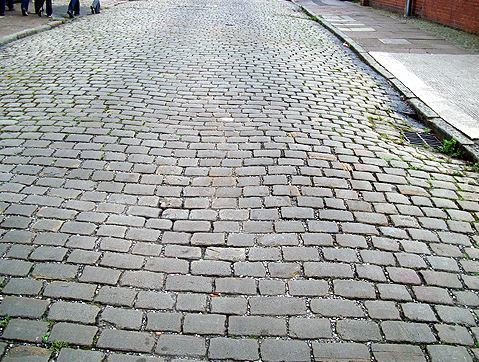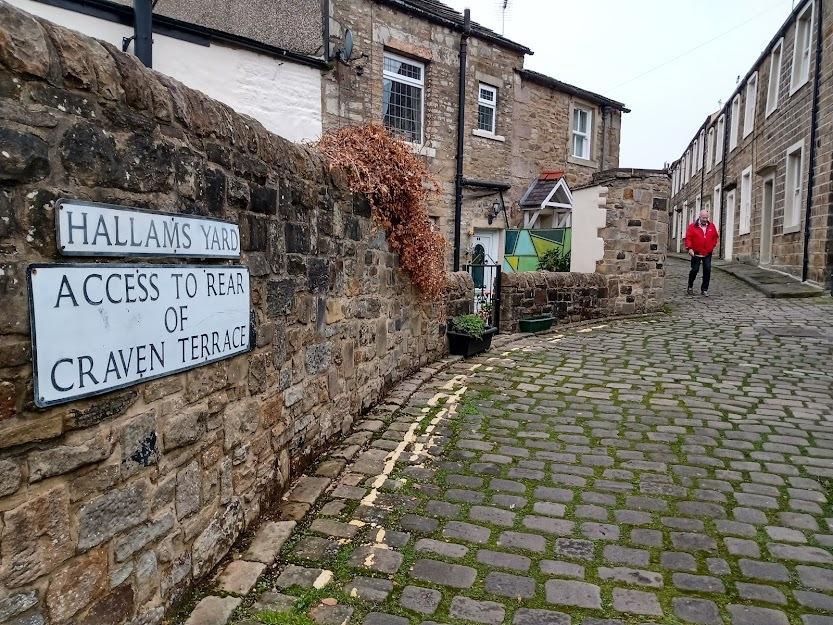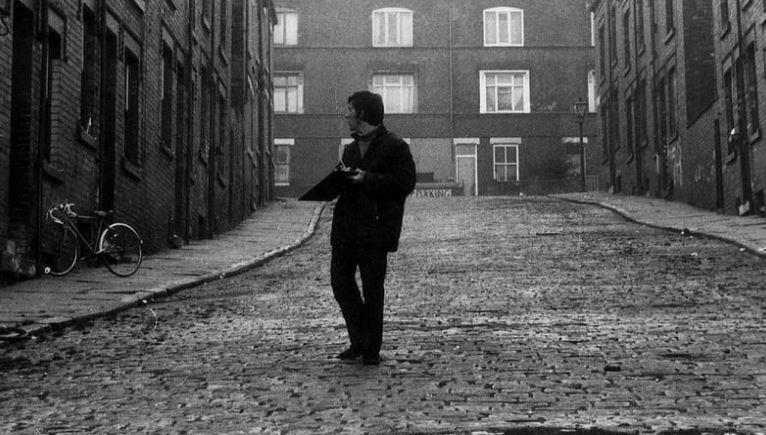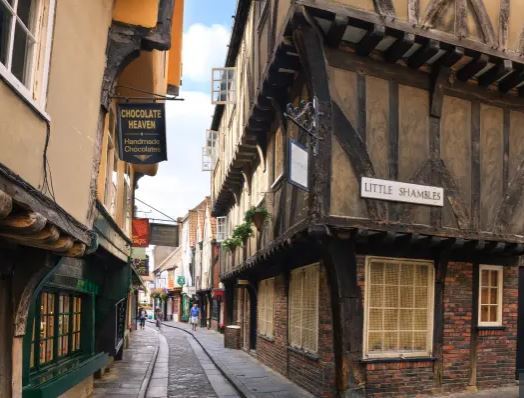WMT #7: Cobbled Climb

The 7th cache of the series is hidden on this steep, cobbled 293m climb ascending some 58m in the process, starting on Southfield Ave at 129m asl and ending at Barley Cote @ 187m asl.
The cache can be found by clicking on the image above which will take you to a jigsaw puzzle, completion of which will reveal the final coordinates and a helpful hint.
Please note that the cache description contains an external link to a jigsaw.
Although it is from a well-known source, it has 'not been checked by Groundspeak nor by the reviewer for possible malicious content and access to the site is therefore at your own risk'.
This is an average slope of approx 1 in 5, 20% or 11O so, having gained most of the height reached during this trail. you are entitled to take a brief rest here to catch your breath, admire the view and . . . locate the cache!
[The ginnel actually starts some 250m distance/15m further down on Lynton Drive, giving the ginnel a total length of 441m and ascent of 73m].
You will have noticed that this part of the ginnel/snicket (at least) is 'cobbled' or more accurately paved in setts.

Cobblestone is a natural building material based on cobble-sized stones, and is used for pavement roads, streets, and buildings. Setts, also called Belgian blocks, are often casually referred to as 'cobbles' although they are distinct from cobblestones by being quarried or shaped to a regular form, whereas cobblestone is generally of a naturally occurring form and less uniform in size.

Cobblestones are typically either set in sand or similar material, or bound together with mortar. Paving with cobblestones has several major advantages. It allows a road to be heavily used all year long. It prevents build-up of ruts often found in dirt roads and allows immediate drainage of rainwater preventing mud in wet weather. It also prevents dust in dry weather.
Shod horses can get better traction on stone cobbles, pitches or setts than tarmac or asphalt. As carriage wheels, horse hooves and car tyres make a lot of noise when rolling over cobblestone paving might be considered a disadvantage, but it warns pedestrians of their approach. In England, the custom was to strew straw over the cobbles outside the house of a sick or dying person to dampen the sound.

Cobblestones set in sand have the environmental advantage of being permeable paving, and of moving rather than cracking with any ground movements.
Cobblestones were mostly replaced by quarried granite setts in the C19. These were relatively even, roughly rectangular stones laid in regular patterns. They gave a smoother ride for carts, although in heavily used sections, such as yards, they were often replaced parallel granite slabs separated by the standard cart axle length of the time.

Cobblestoned and 'setted' streets gradually gave way to macadam roads, later to tarmac, and finally to asphalt concrete at the beginning of the C20. However, they are often retained in historic areas, even for streets with motor vehicles. Many older (areas of) villages and cities in Europe are still paved with cobblestones.
More recently, cobblestones have become a popular material for paving newly pedestrianised streets in Europe. In this case, the noisy nature of the surface is an advantage as pedestrians can hear approaching vehicles. The appearance of cobblestones also show that the area is more than just a normal street. The use of cobblestones/setts is also considered to be a more 'upmarket' roadway design being more 'unique and artistic' compared to normal asphalt roads.

Use in cycling: in cycling road races, cobblestones are used as an additional difficulty for the riders. It requires special skill to ride over cobblestones efficiently, without falling or getting a flat tire. The Tour of Flanders and Paris–Roubaix are notable cobbled classics.
See here for a blog on issues involving cobbled streets in modern cities.
